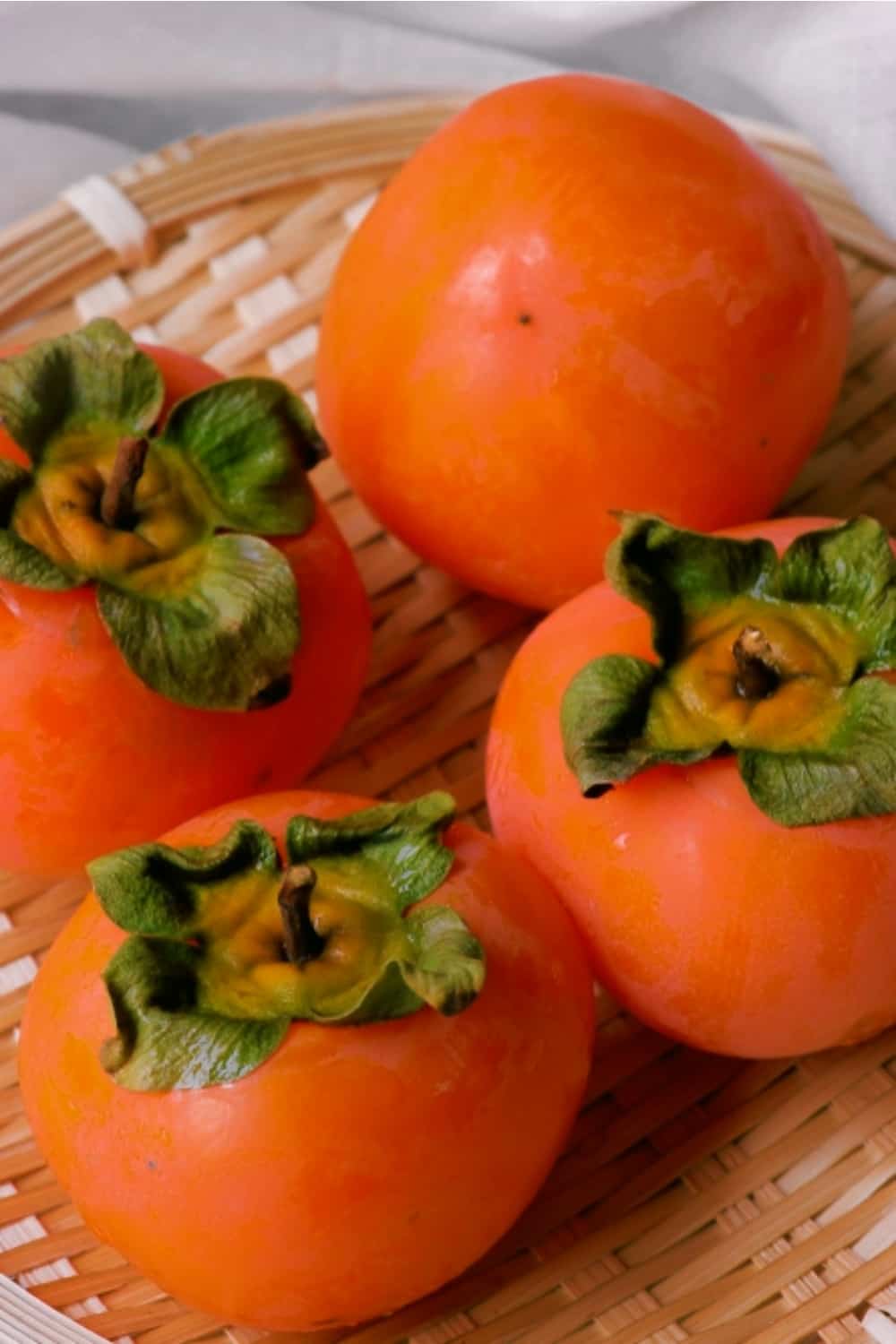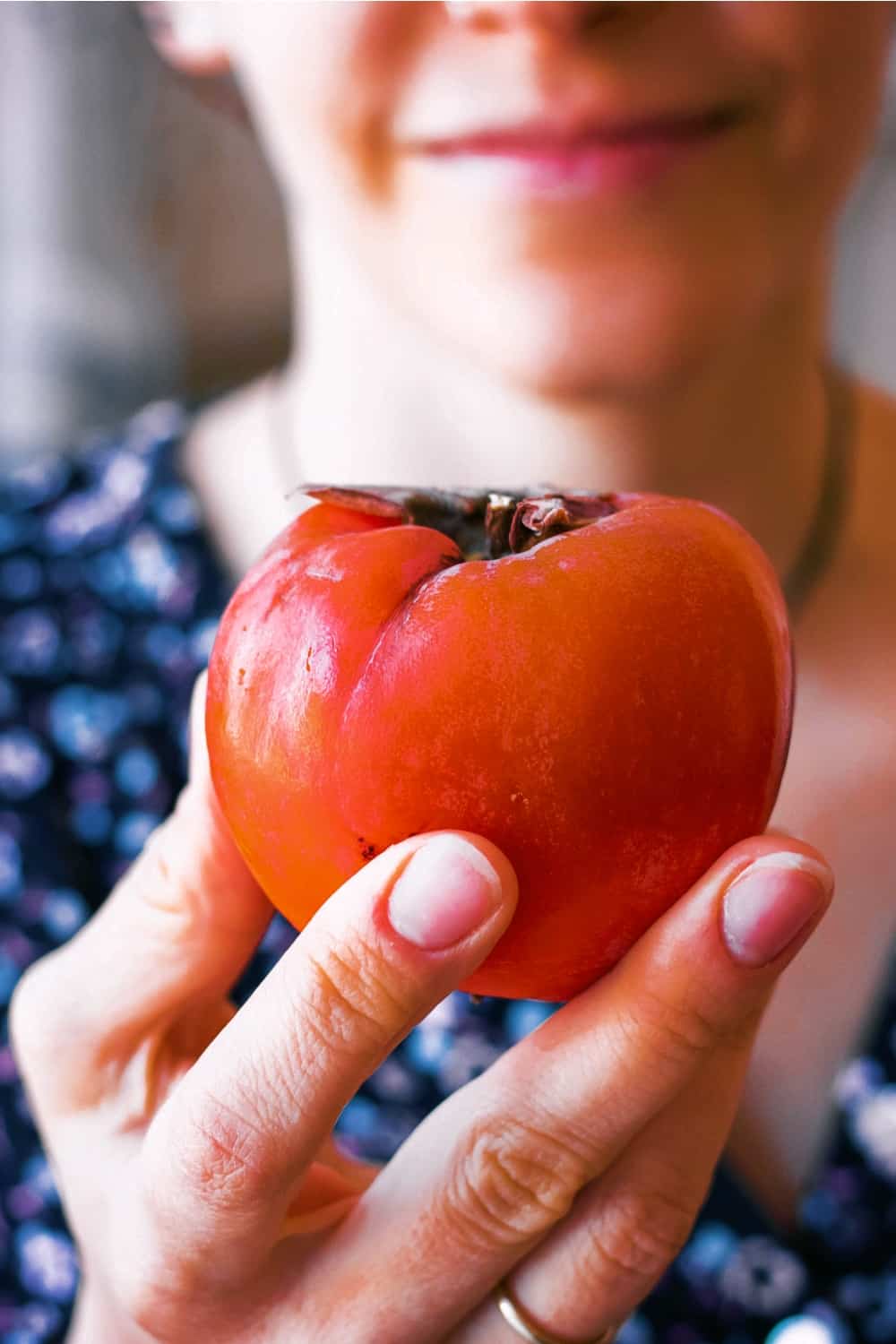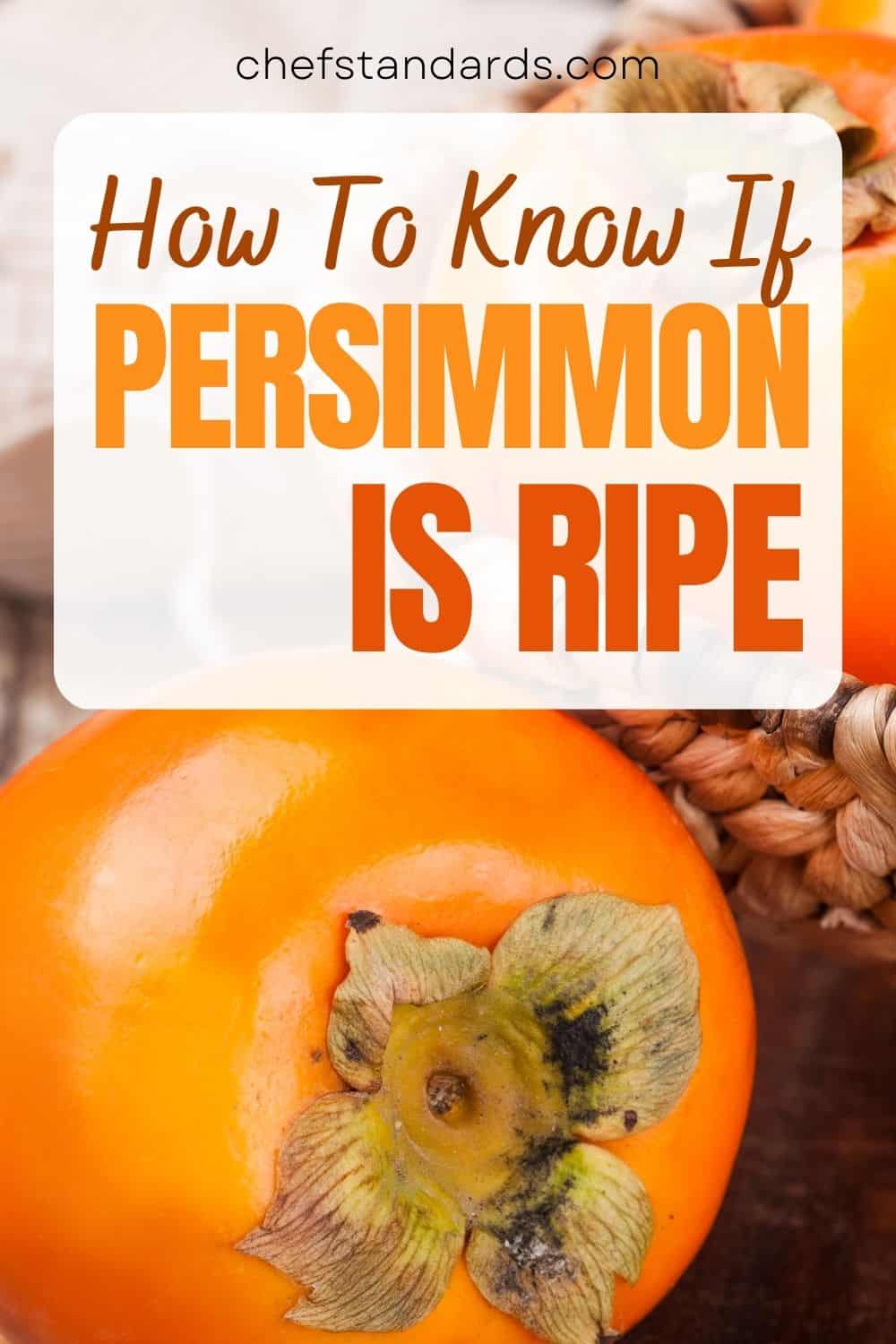I don’t know about you, but I really like to see a bunch of colorful fruits on rainy and cold days of late autumn when all the trees are dried up.
Persimmons always bring back childhood memories, as there was a Persimmon tree near my house, and I was always excited when it brought shiny fruits somewhere between September and October.
Although many people are not fans of this amazing fruit, and some of them do not even know what it is, I kept enjoying it to this day.
However, there are many of them who would like to give it a try, but don’t know how to eat it, nor when it is good for eating.
Because of that, I want to share with you my knowledge about persimmons, as well as when persimmons are ripe because that is the most important thing to know.
4 Crucial Signs Of Persimmons Ripeness

When I think about persimmons, their shiny orange color and distinctive softness are the things that first come to my mind. However, there are so many things to look for when it comes to the ripeness of this fruit that starts with P.
Aside from that, not all persimmons are the same. Some varieties are darker than others, and some are edible when firm while others are not. There is a lot to talk about, so it is best to begin.
In this part, I will just reveal 4 factors that are crucial for recognizing ripe persimmons.
1. Color: One of the most noticeable signs of ripeness in persimmons is a change in color. Based on the variety, ripe persimmons can range from vibrant orange to deep red.
2. Texture and Consistency: One thing is sure – if your persimmon is hard as a rock, it is definitely not ripe. Ripe persimmons should have a firm but slightly yielding texture. They should feel plump and have a slight give when gently squeezed.
3. Taste: Taste is crucial, but the problem is that you have to slice your persimmon in half to taste it. However, ripe persimmons should have a predominantly sweet and slightly tangy flavor.
If the fruit leaves a dry or bitter aftertaste in your mouth, it is most likely underripe.
4. Aroma: Similarly to taste, the aroma of persimmons should be sweet and somewhat honey-like. If it doesn’t have any aroma, there is a high probability that it hasn’t fully ripened.
If you want, you can also check out this video that will show you how to eat a persimmon and how to know if it is ripe.
Different Persimmon Varieties And Their Ripeness
Like with most types of food, it is not always so simple because there are always different varieties with their unique characteristics. The same goes for persimmons, as you can find many different types out there.
However, I covered the most frequently consumed ones here in the US. Those are Fuyu, Hachiya, and American persimmon and they are all slightly different when it comes to the ripening process.
Fuyu
Fuyu is the most popular variety of persimmon and you will most often find this type in all grocery stores.
The secret to their popularity is the fact that they are a non-astringent variety, meaning that, even when firm, they do not have that strong sour flavor that we all tend to avoid.
This is the key factor in determining the level of ripeness of Fuyu persimmon, meaning that it doesn’t have to be too soft to be ripe and ready for eating.
This doesn’t mean you can eat them when they are hard as a rock, but a firm texture with slight yieldness when gently pressed is fine.
When it comes to color, a ripe Fuyu typically has a vibrant orange color. The skin of a ripe Fuyu persimmon may display a glossy appearance, and it should be free from any green tinges.
The great thing about Fuyu is the fact that you can eat it even if it is a bit softer. It will be a bit sweeter and some might find that gelatine-like texture less appealing, but it will be still edible.
Unripe Fuyu tends to be very hard, somewhat like rock, and it typically has a greenish or pale orange color. If you notice this, you must let it ripen a bit more in order to enjoy it.
Hachiya
If you see a persimmon with an acorn shape, which is elongated and has a pointy bottom, know that you are looking at the Hachiya variety.
Unlike Fuyu, it is an astringent variety and that is actually the biggest difference between them when it comes to determining the level of ripeness.
Namely, Hachiya will have a very astringent taste once you bite it if it is still firm. That astringency comes from tannins that are over-represented in this persimmon variety.
I am saying this from my own experience, stay away from firm Hachiya because you will go through one of the worst tasting experiences in your life.
The Hachiya persimmon must fully soften in order for you to experience those wonderful sweet and honey-like flavors.
It also has to be deep-red or orange-red in color. If it is green or pale yellow, you are probably preparing your taste buds for an unpleasant surprise.
American Persimmon
Although it bears the name “American”, this persimmon variety is not as popular as the two previously described ones, especially compared to Fuyu.
This is mostly due to the fact that they are much smaller in size. Aside from that, just like Hachiya, they need to be very soft in order to be palatable.
In fact, they are very similar to Hachiya, besides the fact that they are a lot smaller and that they do not ripen off of the tree. Therefore you need to wait until they are soft before harvesting them.
They also have a deep orange to reddish-orange color when ripe. However, the color alone may not be the most reliable indicator of ripeness for American persimmons, as some varieties may retain their green color even when fully ripe.
Fortunately, they are not so common.
When ripe, American persimmons should yield to gentle pressure and feel soft to the touch, similar to a ripe tomato. However, don’t press them too much as that can easily bruise or damage the fruit.
The aroma should be sweet, similar to Hachiya, and the taste should be somewhat date-like or reminiscent of an apricot, but with more tannins.
Ripening Process And Proper Harvest And Storage Of Persimmons

No matter how well you know about the ripening process of persimmons, you still have to know how to handle them properly or you will end up with inedible ones.
Harvest Persimmons Properly
Persimmons are typically harvested between September and October. This is because they mature in this period of the year.
In most cases, they won’t fully ripen, but the ripening process continues even after they have been harvested. You shouldn’t harvest them before this time, because if they don’t fully mature, they won’t be able to ripen after that.
That is especially important in the case of Hachiya and American persimmons, as they are not eaten until fully ripe.
One more piece of advice is that, when harvesting persimmons, avoid forcefully pulling the fruit, as it may damage the stem or the fruit itself.
It’s advisable to cradle the fruit gently in your hand while picking to prevent bruising or puncturing the skin.
If you need to transport persimmons over longer distances, place them in padded containers or wrap them individually in soft paper to provide cushioning and prevent bruising.
Proper Storage Is Also Very Important
In most cases, you can store your persimmons at room temperature, especially if they haven’t fully ripened. This is especially the case with American persimmons and Hachiya.
Depending on the stage of ripeness as well as the type of persimmon, it can take from just a few days to over one week for them to fully ripen.
If you can’t wait for too long, there is a way to accelerate that process. Namely, persimmons produce ethylene gas which is responsible for the ripening process.
If you trap that gas within persimmons, it will do the job more quickly. So, you can put your persimmons in a brown paper bag, seal it tightly, and let the gas do the trick.
If you are really impatient, you can put a few ripe bananas in that bag as well, and the process will be even faster. Namely, bananas also produce ethylene gas, so more ethylene gas means less time for ripening.
On the other hand, if your persimmons are on the edge of becoming overripe, but you don’t want to consume them right away, you can put them in the fridge. This will give them 1-3 additional days.
Freezing is the final way to store your persimmons. However, you can not just put the whole persimmon in the freezer and expect that the result will be good.
It is best that you peel and remove any seeds or core before freezing. Puree your persimmons, and store them in airtight containers or freezer bags.
Your persimmon puree will stay good in the freezer for up to 1 year.
How To Tell If Persimmon Is Overripe?

We discussed the signs to look for in order to know if your persimmon is ripe, but knowing if it is overripe is maybe even more important because overripe persimmons can be quite unpleasant or even dangerous to your health.
So here are a few signs to look for:
• Color: If you are dealing with an overripe persimmon, it may exhibit a dull or darkened color. It might appear excessively dark orange, brownish, or even black in some cases.
If the color is uneven or patchy, it is most likely that the fruit has started to deteriorate, so it is best to discard it.
• Touch and Feel: If you press an overripe persimmon, even gently, your finger will go deep into the fruit. This is because, when overripe, persimmons tend to be excessively soft, and even mushy.
The flesh of an overripe persimmon may become mealy, grainy, or watery. Instead of the desired creamy or custard-like texture, the fruit may disintegrate easily and lack structure.
• Taste: When overripe, a persimmon loses its recognizable flavor profile. It will taste overly sweet and exhibit fermented undertones as well.
The sweetness might become cloying or unbalanced, lacking the complex and nuanced flavors of a properly ripe persimmon.
• Aroma: When a persimmon is overripe, it will emit a sour or fermented odor. So if you notice an unpleasant or off-putting smell, it could indicate that the fruit has become overripe and started to spoil.
Know Your Persimmons Ripeness
So, when is persimmon ripe?
Although a lot depends on the exact variety of persimmon, there are a few factors to consider when trying to recognize ripe persimmons.
In general, the color of ripe persimmons is vibrant orange to deep red. A ripe persimmon isn’t as hard as a rock, but the exact softness depends on the type of persimmon.
It has a sweet and slightly tangy flavor, and the aroma is also sweet and somewhat honey-like.

